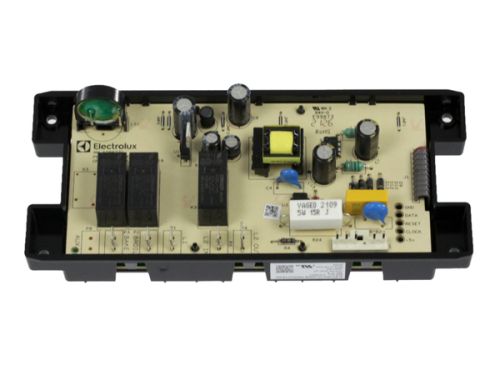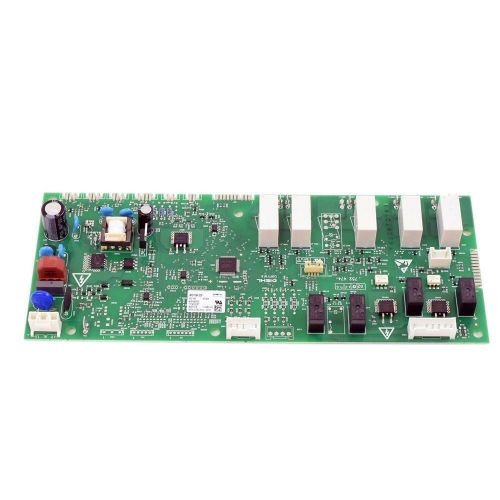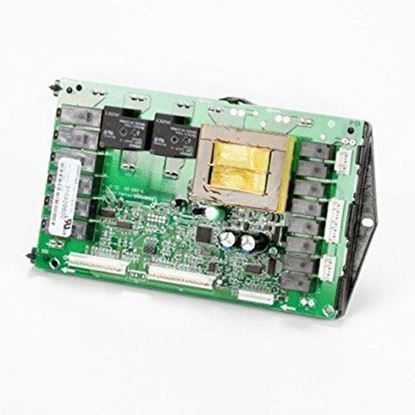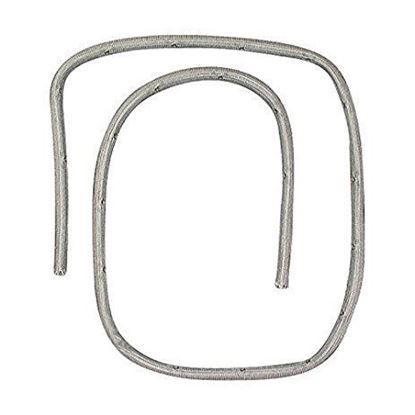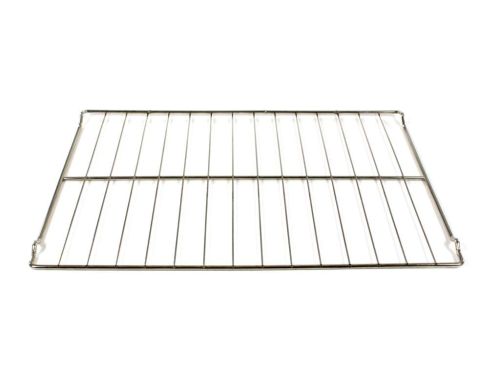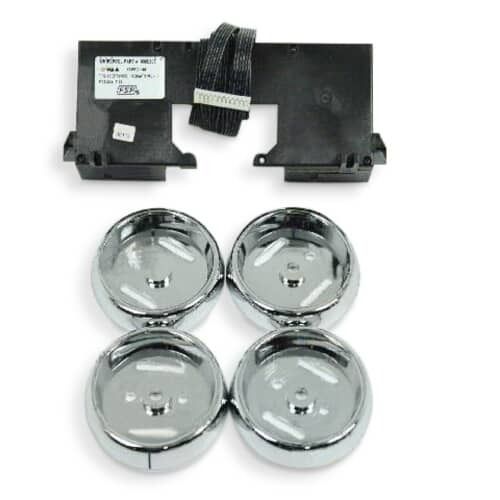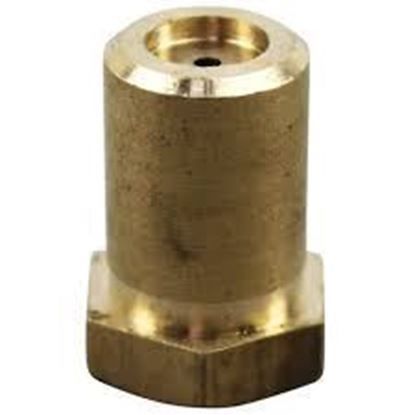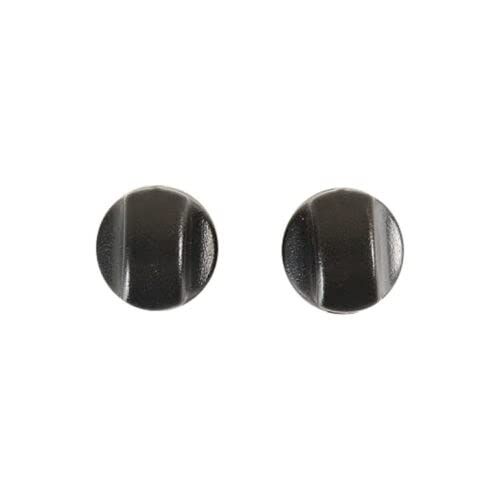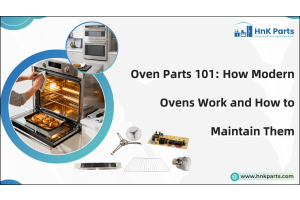
The Ultimate Guide to Oven Preheating: How Long It Takes and How to Optimize It
Preheating the oven is a crucial step in the cooking process that is often overlooked or underestimated. Whether you're baking a batch of cookies, roasting a succulent chicken, or broiling a mouthwatering steak, the temperature of the oven plays a vital role in achieving optimal cooking results. In this comprehensive guide, we delve into the question that many home cooks ponder: how to preheat oven? We will explore the factors that influence preheating time, debunk common misconceptions, and provide practical tips to ensure your oven reaches the desired temperature for flawless culinary creations.
What is Preheating an Oven?
Preheat oven refers to the process of heating the oven to the desired temperature before placing the food inside. It is an essential step in cooking and baking, ensuring that the oven reaches the optimal temperature for the specific recipe.
HnKParts is your ultimate destination for oven parts and a wide range of home appliance parts. We offer a comprehensive selection of top-selling brands like GE, Maytag, Whirlpool, and more. From heating elements and thermostats to igniters and control boards, we provide high-quality oven replacement parts to keep your oven running smoothly.
Purpose of Oven Preheating: Ensuring Even Cooking and Proper Browning
Preheat the oven to reach its desired temperature ensures even cooking and browning. It stabilizes the internal temperature, distributing consistent heat. This is vital for delicate items like cakes and cookies. Without preheating, uneven heat may cause undercooked or overcooked spots. Preheating allows food to immediately cook at the desired temperature, achieving ideal texture, color, and flavor. It helps form a crisp crust on dishes like roasted meats and bread. Preheat an oven is crucial for precise recipes, ensuring accurate and consistent results.
Benefits of Oven Preheating: Improved Texture, Flavors, and Baking Results
Preheating the oven offers several advantages. Firstly, it improves texture in baked goods by activating leavening agents, resulting in desired rise and texture. Secondly, it enhances flavors through the Maillard reaction, producing delicious tastes and aromas. Lastly, preheating ensures better baking results by accurately calculating cooking time, preventing underdone or overdone dishes. Additionally, it minimizes the risk of foodborne illnesses by quickly reaching a safe internal temperature.
Find out the 6 quick and easy steps to use an oven effectively.
Factors Influencing Oven Preheating Time
When it comes to preheating your oven, several factors can affect the amount of time it takes to reach the desired temperature. Understanding these factors can help you plan your cooking schedule more effectively and optimize your oven's performance. Below are some key elements that influence oven preheat time:
Oven Type and Model Variations: Different types of ovens, such as gas, electric, convection, and toaster ovens, have varying preheating times.
- Gas ovens typically heat up faster than electric ovens due to the direct flame or heat source.
- Convection ovens, which use a fan to circulate hot air, generally preheat faster than conventional ovens.
- Toaster ovens, being smaller in size, tend to preheat more quickly compared to their larger counterparts.
Oven Size and Capacity: The size and capacity of your oven play a significant role in preheating time. Larger ovens require more time to preheat than smaller ones due to the increased volume of air that needs to be heated. If you're using a small oven, it can reach the desired temperature relatively faster compared to a larger oven.
Energy Source: The energy source used by your oven can affect its preheating time. Gas ovens tend to preheat faster than electric ovens. While electric ovens rely on heating elements that take a bit longer to warm up. It's important to consider this difference when estimating oven preheat time. you can control these time and other settings on the control panel.
External Factors: Certain external factors can influence the preheating time of your oven including room temperature, warm kitchen, the altitude at which your oven is located.
Average Preheating Times for Different Oven Types
The time to preheat the oven to reach desired temperature varies depending on the type of oven you are using. Let's take a closer look at the average preheating times for different types of ovens.
Electric Ovens:
Electric ovens are widely used in households and professional kitchens alike. They rely on electricity to generate heat. On average, electric ovens take approximately 10 to 15 minutes to preheat to a temperature of around 350°F (175°C). However, the actual oven preheat time can vary based on the size, insulation, and efficiency.
Gas Ovens:
Gas ovens, as the name suggests, use natural gas or propane to generate heat. These ovens typically have a gas burner at the bottom that provides the necessary heat. Gas ovens generally preheat faster than electric ovens. On average, it takes around 5 to 10 minutes for a gas oven to reach a temperature of approximately 350°F (175°C). Again, factors such as oven size, insulation, and efficiency can influence the oven preheat time.
Convection Ovens:
Convection ovens are designed to circulate hot air evenly throughout the cooking chamber. This results in faster and more even cooking. Convection ovens can be either electric or gas-powered. The preheating time for convection ovens is usually similar to that of conventional ovens. On average, it takes around 10 to 15 minutes to preheat a convection oven to a temperature of approximately 350°F (175°C). Some models may have a faster preheating time due to improved airflow and heating elements.
Toaster Ovens:
Toaster ovens are compact countertop appliances that offer convenience for smaller cooking tasks. They are commonly used for toasting bread, reheating leftovers, or baking small portions of food. Preheating times for toaster ovens tend to be relatively short due to their smaller size and lower wattage compared to traditional ovens. On average, it takes approximately 5 to 10 minutes for a toaster oven to preheat to a temperature of around 350°F (175°C).
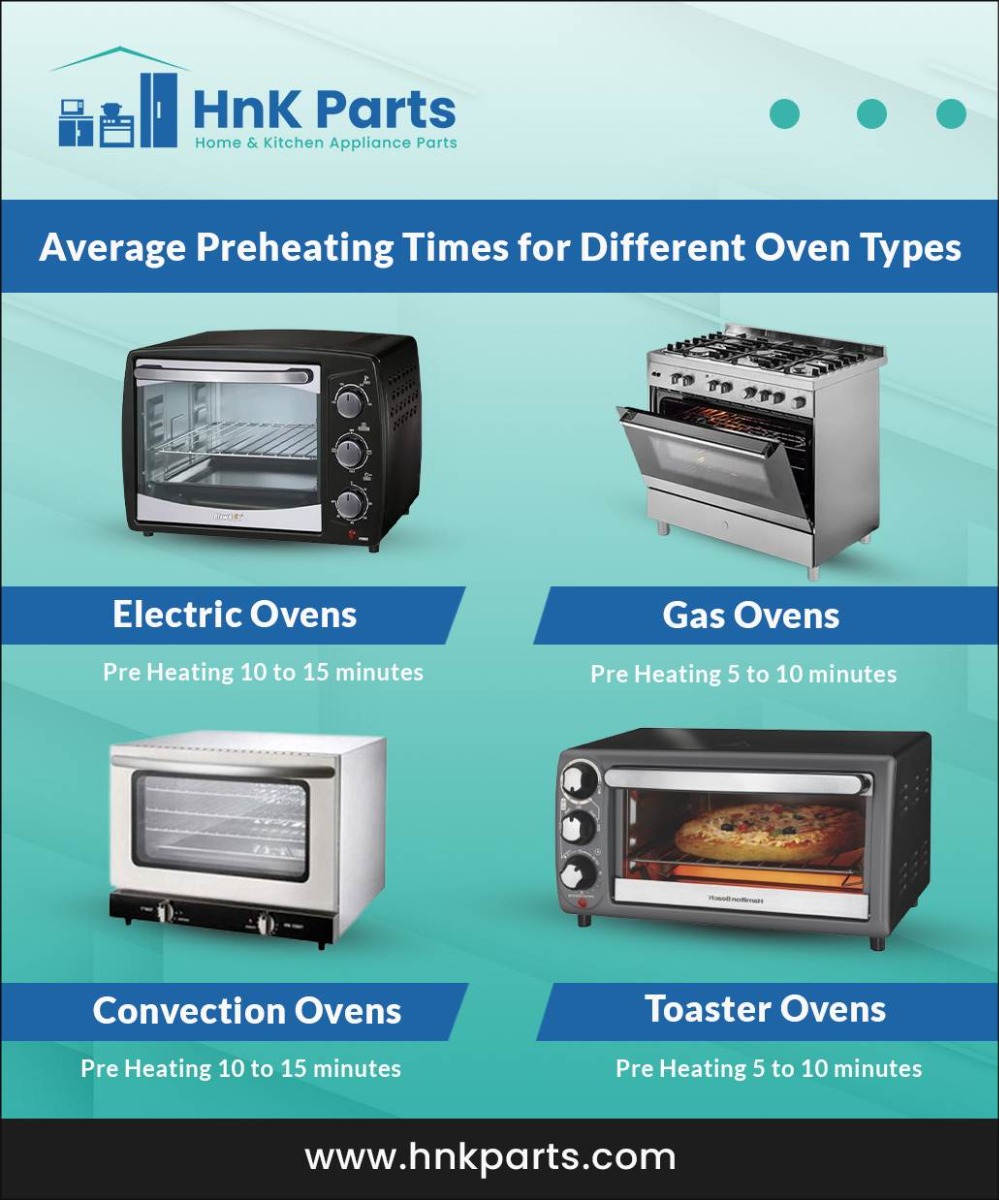
Know more about the Different types of oven. How to preheat oven step by step?
How to preheat an oven step by step?
We know that, preheating an oven is an essential step in cooking or baking. It ensures that the oven reaches the desired temperature before placing your food inside, resulting in more accurate and consistent cooking. Whether you're a beginner in the kitchen or just need a quick refresher, here is a step-by-step guide on how to preheat oven to reach the desired temperature:
Step 1: Read the Recipe
Before preheat an oven, carefully read the recipe you are following. The recipe will specify the required temperature for baking or cooking your dish.
Step 2: Remove any Obstructions
Check the oven and ensure that there are no racks, baking sheets, or other items inside. Clear out any lingering pans or racks to allow proper air circulation during preheating.
Step 3: Adjust the Oven Rack
If your recipe indicates a specific oven rack position, adjust the rack accordingly. Typically, the middle rack is a good starting point for even heat distribution. However, always follow the recipe's instructions for optimal results.
Step 4: Set the Temperature
Locate the oven control panel and turn on the oven. Depending on your oven's type, you may have a dial, buttons, or a digital display. Select the desired temperature as specified in your recipe. Most ovens have a preheat setting or allow you to input the temperature manually.
Step 5: Wait for Preheating
Once you've set the desired temperature, give the oven some time to preheat. Ovens typically display an indicator light or a timer to let you know when the preheating process is complete. Preheating times can vary depending on the oven type and desired temperature, but it usually takes around 10-15 minutes.
Step 6: Begin Cooking/Baking
Once the oven reaches the desired temperature, it's time to start cooking or baking. Open the oven door and quickly place your dish inside. Be cautious not to keep the oven door open for too long, as this can cause heat loss and affect the cooking process.
How do you know when the oven is preheated?
When preheating an oven, there are several ways to determine if it has reached the desired temperature. Most ovens are equipped with a light or indicator that turns on when the preheat cycle is complete. This visual cue allows you to know when it's ready for use. In addition, some ovens emit an audible sound, such as a beep, to signal the end of the preheating process. If your oven lacks these features, you can use an oven thermometer to manually check the temperature inside. Simply place the thermometer in the oven and wait for it to reach the desired temperature before starting to cook. A Thermostat is the main component to control the oven temperature in an oven.
Why does an oven take so long to preheat?
Oven takes long time to preheat because they are designed to reach and maintain the desired temperature. This process involves converting energy into heat, which naturally takes time. Larger ovens, which require more energy, may also take longer to preheat. The preheating stage is crucial for ensuring that the oven is at the optimal temperature for cooking, baking, or roasting, allowing for even and consistent results. So, while the wait may feel long, it's an essential step in achieving delicious and well-cooked meals.
Tips for Efficient Oven Preheating
Follow the below tips & reduce your oven preheating time efficiently:
Proper Placement of Oven Racks
When preheating your oven, make sure to position the oven racks in the desired locations before turning it on. This allows the heat to circulate evenly throughout the oven cavity, ensuring uniform cooking results.
Preheating Methods for Faster Results
- Use the convection cooking mode: Utilize the convection setting on your oven if available. This mode helps to circulate the hot air more efficiently, resulting in faster preheating times.
- Opt for smaller dishes: When possible, use smaller dishes for your recipes. Smaller dishes require less heat energy to cook, which can reduce the preheating time by up to 10%.
Accurate Oven Temperature
Use an oven thermometer to ensure the accuracy of the oven temperature. Many ovens may have variations in temperature, and relying solely on the built-in thermostat may result in inconsistent cooking. An oven thermometer provides a more reliable reading, allowing you to adjust accordingly.
Benefits of Using Oven Thermometers
By using an oven thermometer, you gain precise control over the temperature inside your oven. This ensures that your recipes are cooked at the desired temperature, resulting in better quality and evenly cooked dishes.
Additional Tips:
- Close the oven door immediately after adding food to minimize heat loss. Opening the door frequently can significantly decrease the oven temperature and prolong the preheating process.
- If you're in a hurry, consider using alternative cooking appliances like a microwave or toaster oven. These appliances typically have faster preheating times and can be a convenient option when time is limited.
Troubleshooting Oven Preheating Issues
There are several common issues that can arise during the preheating process. Here is how to troubleshoot oven preheating issues:
Uneven Preheating / Oven takes long time to preheat
One common problem is uneven preheating, where certain areas of the oven reach the desired temperature while others lag behind. This can result in unevenly cooked food. To address this issue, it is crucial to properly distribute the oven racks and avoid overcrowding. Placing items too close together can obstruct the airflow,and thus your oven takes long time to preheat. Additionally, using an oven thermometer can help you identify hot and cold spots, allowing you to adjust your cooking methods accordingly.
Oven smells like gas when preheating
It could indicate a potential issue. The most common cause is a faulty igniter or burner. Here are troubleshooting steps you can take, if your oven smells like gas when preheating:
- Check for gas leaks by using soapy water on the gas connection and looking for bubbles.
- Ensure the oven's burners and gas supply valves are tightly closed.
- Clean the oven's interior to eliminate any built-up residue or spills that could cause the smell.
Smoke coming out of oven while preheating
When smoke is coming out of the oven during preheating, it is usually due to the presence of food or debris stuck on the oven's heating element or interior surfaces. As the oven heats up, the residue starts to burn, resulting in smoke. To resolve this issue, turn off the oven and allow it to cool completely. Once cooled, remove any food or debris from the interior and heating element. Regular cleaning and maintenance of the oven can prevent this problem in the future.
Maintaining a consistent Preheating Temperature
Another challenge is maintaining a consistent preheating temperature. Fluctuating temperatures can affect the cooking process, leading to undercooked or overcooked meals. To ensure stability, check the oven door seal for any damage or gaps that could cause heat loss. Additionally, avoid frequently opening the oven door during preheating, as this can disrupt the temperature. If necessary, recalibrate your oven to ensure accurate temperature readings.
Gas oven not preheating:
If your gas oven not preheating, there could be several reasons for this issue. Here are a few troubleshooting steps you can try:
- The oven igniter is a common component that may cause slow preheating. If it's weak or faulty, it can extend the preheating time. Consider having a professional inspect and replace the igniter if necessary.
- Sometimes, ovens may be improperly calibrated, leading to longer preheating times. Consult your oven's manual to see if it provides guidance on recalibrating the temperature settings.
- Ensure that the oven's ventilation system is not blocked or obstructed, as this can affect its performance and preheating speed.
Read more about the 5 Microwave cleaning hacks.
Recommendations for Oven Preheating Different Dishes
Different dishes may require varying preheating temperatures and times. Check out the below table for some recommendations for preheating different dishes in an oven:
|
Dishes Types |
Preheating Temperature (°F) |
Preheating Temperature (°C) |
|
Baked Goods (cakes, cookies, and bread) |
325 - 375 |
163 - 190 |
|
Roasts and Casseroles |
375 |
190 |
|
Pizza and Flatbreads |
450 |
232 |
|
Vegetables |
400 or higher |
204 or higher |
In conclusion, preheating is crucial for achieving successful cooking results. We have discussed the importance of preheating, highlighting how it helps with even cooking and proper browning. We have also explored how to preheat the oven & how different oven types and external factors can influence preheating times. To maximize your cooking outcomes, I encourage you to experiment and find the ideal preheating time for your specific oven. Happy cooking!
FAQs
How long does it take for oven to preheat?
It is generally recommended to preheat your oven for about 15-30 minutes before placing your food inside, depending on the desired temperature and the efficiency of your oven.
How to preheat toaster oven?
Set the desired temperature, allow a few minutes for preheating, and check for an indicator light if available.
How long to preheat oven to 400°F?
The time required to preheat an oven to 400 degrees Fahrenheit can range from 10 to 15 minutes, depending on the oven's make, model, and size. It's recommended to consult the oven's user manual for precise preheating instructions.
How long to preheat oven to 425°F?
Preheating an oven to 425°F usually takes approximately 15-20 minutes. Again, variations in oven types and conditions may slightly impact the actual preheating time.


